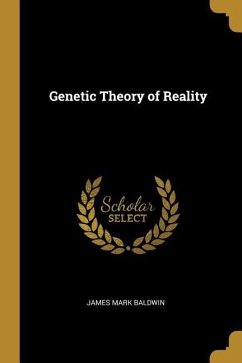
Genetic Theory of Reality
Versandkostenfrei!
Versandfertig in über 4 Wochen
23,99 €
inkl. MwSt.
Weitere Ausgaben:

PAYBACK Punkte
12 °P sammeln!
Genetic Theory of Reality


Rechnungen
Bestellstatus
Retourenschein
Storno